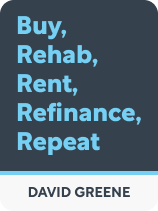

This article is an excerpt from the Shortform book guide to "Buy, Rehab, Rent, Refinance, Repeat" by David Greene. Shortform has the world's best summaries and analyses of books you should be reading.
Like this article? Sign up for a free trial here .
Are you having trouble narrowing down a home loan that’s right for you? What are the six different types of home loans?
Whether you plan on renting out a house or living in a home, you’ll need to decide which type of home loan (or mortgage) best suits you. It all depends on your financial situation, but real estate agent David M. Greene lists six different types of home loans in his book Buy, Rehab, Rent, Refinance, Repeat.
Let’s look at the six different types of mortgages to find out which one you need.
The Different Types of Home Loans
Greene emphasizes that you should have a mortgage pre-approval letter before beginning his BRRRR process, which allows renters to buy homes for cheap prices and sell them for a larger value. That pre-approval gives you a baseline for your refinance, but certain conditions like the loan’s interest rate may change.
(Shortform note: Another major risk is the real estate market crashing between budgeting your project—based on your pre-approval and estimate of the property’s after-repair value—and getting it appraised for your refinance. If home values tank, you lose a large chunk of your investment. Although crashes can be unpredictable, monitor market trends and try to anticipate dips.)
Your lender should work with you to determine which type of loan product is best for your project. As a primer, Greene describes six different types of home loans.
1. Conventional Loan
Many lenders offer conventional loans because they’re partially insured by the government, making this a common option for new investors. For investment properties, this loan typically requires a 20-25% minimum down payment.
(Shortform note: As previously mentioned, if your down payment is less than 20%, you’ll typically have to pay private mortgage insurance (PMI) until you have 20% equity in your home. The annual cost of PMI is based on the size of your loan and your credit score, averaging between 0.58% and 1.86% of your loan. Although this is an added expense, it can make home ownership accessible to buyers who couldn’t otherwise afford a 20% down payment.)
2. Jumbo (High-Balance) Loan
This is a loan that exceeds the regional housing market’s designated borrowing limit. As a result, they tend to carry high-interest rates and lender fees. However, these loans are uncommon for real estate investors who aim to buy low- and mid-level properties.
(Shortform note: Although Greene equates high-balance and jumbo loans, high-balance loans are conforming loans, while jumbo loans are nonconforming. A conforming loan meets the criteria for Fannie Mae and Freddie Mac to back the mortgage, which gives the lenders a safety net and leads to lower interest rates. Since nonconforming loans don’t meet these criteria, lenders take on more risk and have more flexibility to set the terms and requirements, which typically means higher interest rates and minimum down payments.)
3. Home Equity Line of Credit (HELOC)
The third type of home loan is a home equity line of credit (HELOC). This is a loan against your equity in a property. It acts as a credit line, and it often has lower interest rates than credit cards.
(Shortform note: One benefit of using a HELOC is that you avoid the closing costs required for most refinances. These closing costs average 2 to 5% of the loan amount.)
4. Portfolio Loan
This is a loan that the lender or bank (often a credit union or savings and loan association) holds in its portfolio, rather than selling it to a secondary buyer. Although these loans have higher interest rates than non-portfolio loans, they’re critical for high-volume real estate investors because a conventional loan can’t finance more than 10 properties.
(Shortform note: Portfolio loans can also be a good option for buyers who are struggling to get approved for conventional loans, because portfolio loans don’t have to meet conforming loan criteria, and they may not require PMI. However, portfolio loans are harder to secure than conventional loans because fewer lenders offer them.)
Additional Loans
Greene also lists two loans that require you to live in the home (at least initially). If you qualify for these different home loans, he explains that you can still earn cash flow while living on the property: You can rent out your extra bedrooms in a single-family home or buy a multifamily property and rent the other units. These loans are the Federal Housing Act loan and the Veteran Affairs loan.
1. Federal Housing Act (FHA) Loan
This loan allows for a lower down payment and lower credit score, but it requires you to pay mortgage insurance unless or until you refinance later.
(Shortform note: As of 2022, FHA applicants can qualify for a 3.5% down payment if they have steady income, proof of employment, a credit score of 580 or higher, and a debt-to-income ratio under 43%.)
2. Veteran Affairs (VA) Loan
The last of these different types of important home loans is the veterans affairs loan. This loan requires no down payment and no mortgage insurance. However, VA loans are only available to active or former military members, and Greene says that listing agents often avoid them because they come with stricter guidelines that make it harder to close a sale. (Shortform note: Among other advantages, VA loans often have lower interest rates and lower closing costs than conventional loans. On the other hand, VA loans prohibit waiving certain contingencies and require buyers to pay a funding fee, which generally ranges from 1.4 to 3.6% of the loan amount.)

———End of Preview———
Like what you just read? Read the rest of the world's best book summary and analysis of David Greene's "Buy, Rehab, Rent, Refinance, Repeat" at Shortform .
Here's what you'll find in our full Buy, Rehab, Rent, Refinance, Repeat summary :
- An explanation of the BRRRR real estate investment method
- How to use the BRRRR method to produce consistent, passive income
- Why you should assemble a "Core Four" team rather than working alone







The most apparent VA Loan benefit is that borrowers are not required to put down any cash upfront. Meaning there is no down payment requirement. This is an excellent benefit for new families looking to purchase their first home who have not yet had the opportunity to save up a significant amount of cash.